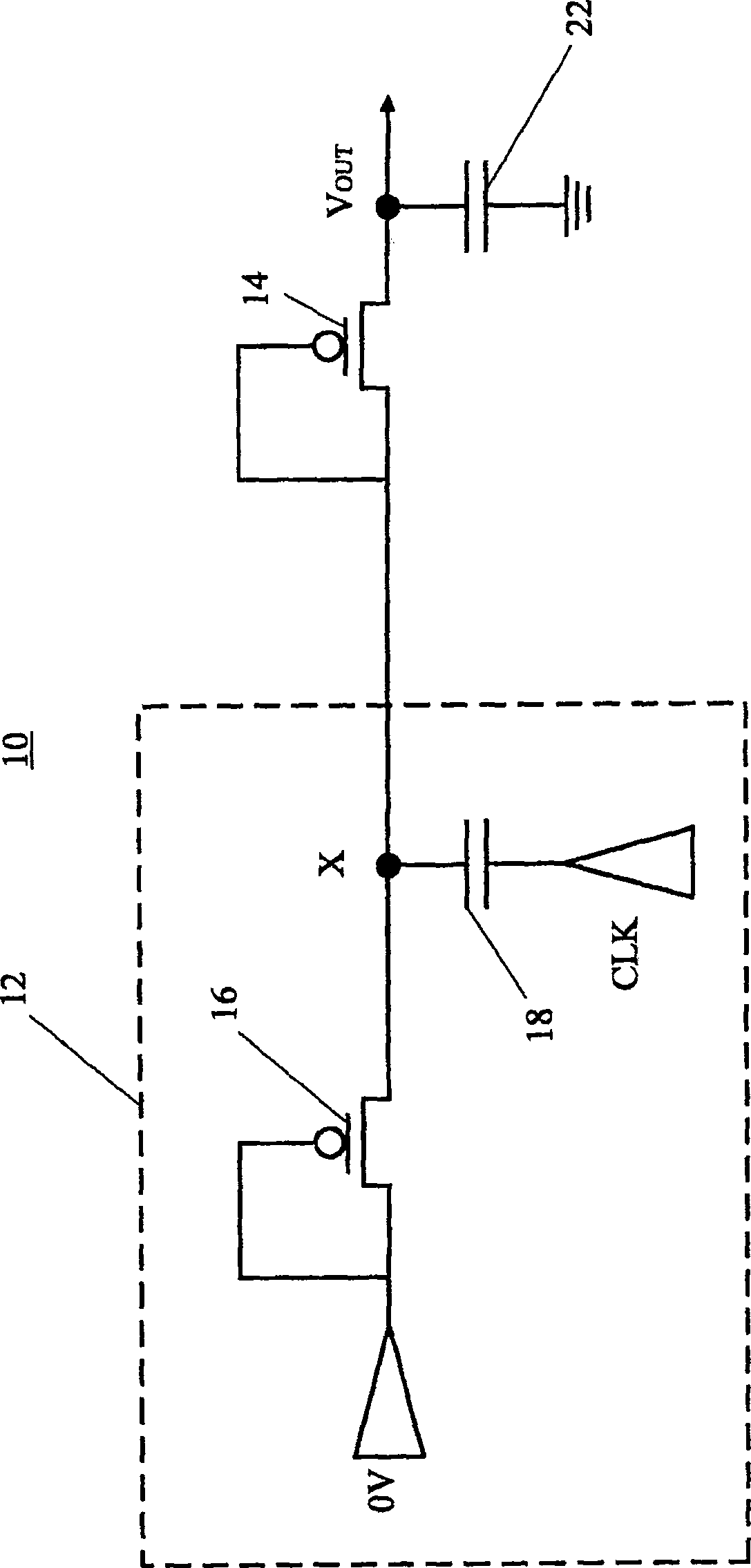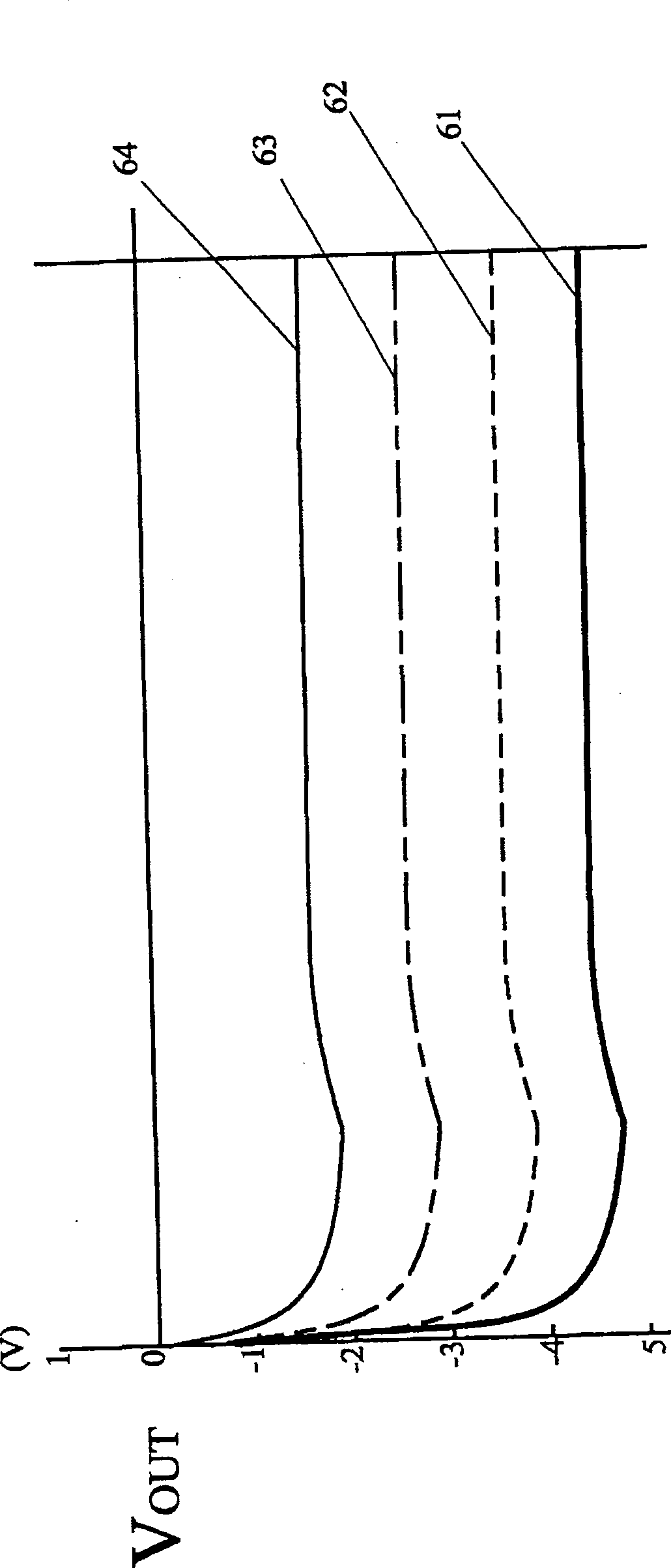Negative voltage converter
A converter and negative voltage technology, applied in the field of negative voltage converters, can solve problems such as difficult circuit design, affecting circuit and component operation, affecting product yield, etc., and achieve the effect of reducing the critical voltage change of components
- Summary
- Abstract
- Description
- Claims
- Application Information
AI Technical Summary
Problems solved by technology
Method used
Image
Examples
Embodiment Construction
[0027] see Figure 4 , Figure 4 It is a circuit diagram of the first embodiment of the negative voltage converter (converter) 100 of the present invention. The negative voltage converter 100 includes a voltage input circuit 102 and a voltage amplifying circuit 104 . The voltage input circuit 102 can input the DC voltage Vss input from the signal input terminal 1021 to the voltage amplifying circuit 104, and the voltage amplifying circuit 104 can amplify and convert the DC voltage Vss into a required negative DC voltage, and output it from the signal output terminal 1022 .
[0028] The voltage input circuit 102 includes a first transistor M1, a second transistor M2 and a third transistor M3, and the transistors M1-M3 are P-type metal oxide semiconductor transistors. The control terminal of the first transistor M1 is connected to the signal input terminal 1021 of the negative voltage converter 100 , and the signal input terminal 1021 is coupled to a DC supply voltage Vss. A...
PUM
 Login to View More
Login to View More Abstract
Description
Claims
Application Information
 Login to View More
Login to View More - R&D
- Intellectual Property
- Life Sciences
- Materials
- Tech Scout
- Unparalleled Data Quality
- Higher Quality Content
- 60% Fewer Hallucinations
Browse by: Latest US Patents, China's latest patents, Technical Efficacy Thesaurus, Application Domain, Technology Topic, Popular Technical Reports.
© 2025 PatSnap. All rights reserved.Legal|Privacy policy|Modern Slavery Act Transparency Statement|Sitemap|About US| Contact US: help@patsnap.com



